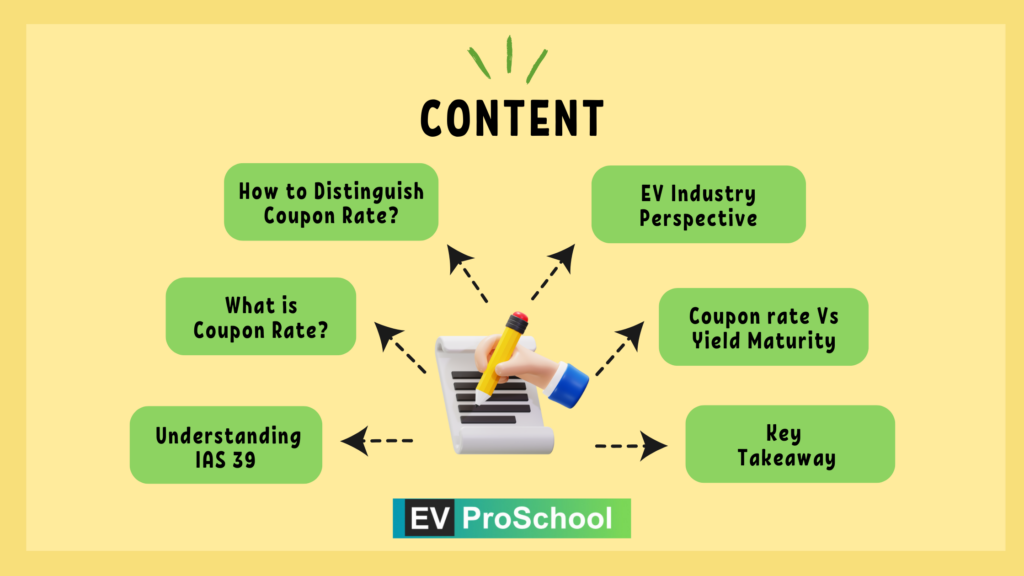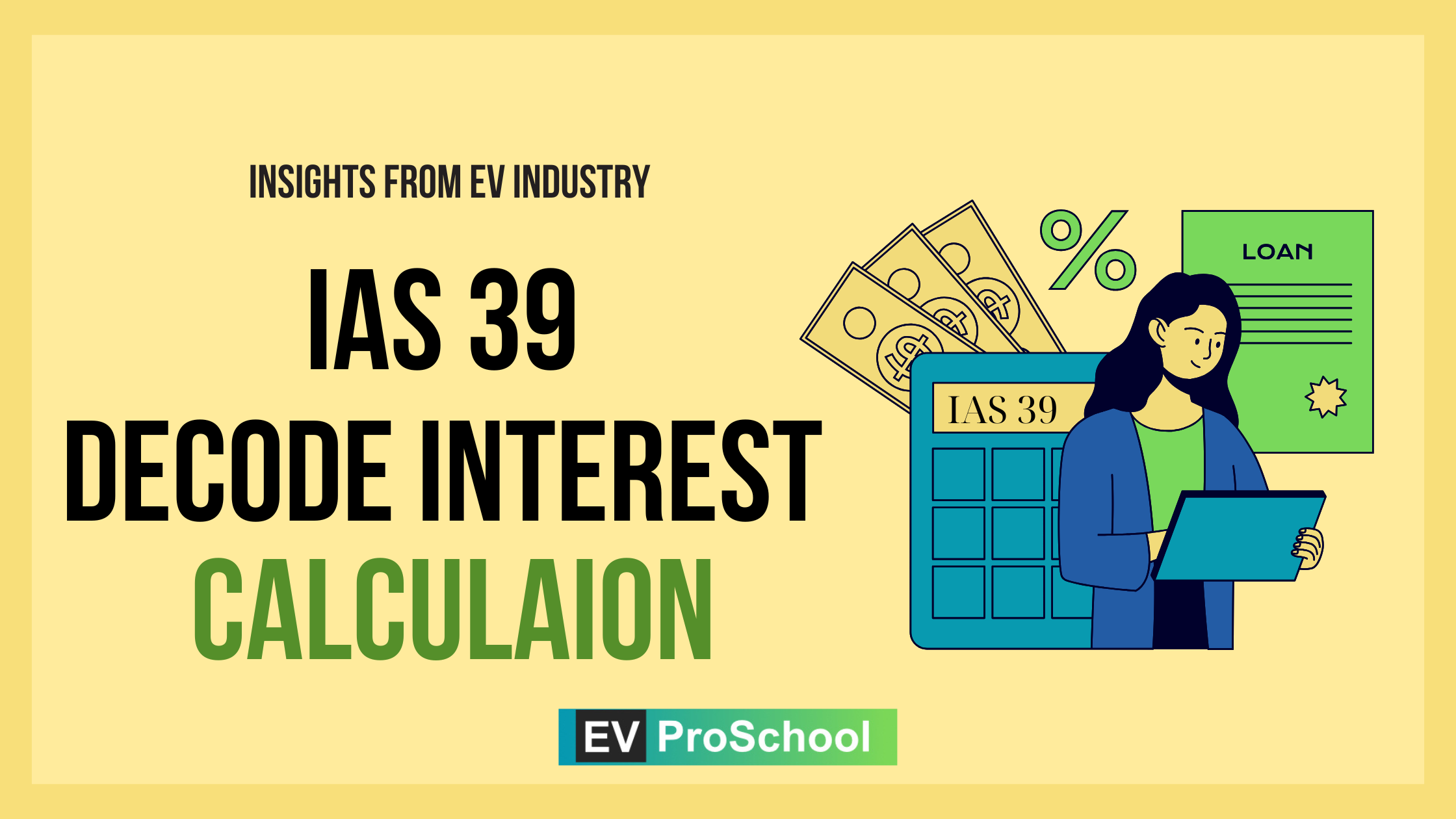The realm of finance within the electric vehicle (EV) industry is as dynamic as its technological advancements. A crucial aspect that EV businesses navigate is the management of debt and the computation of interest, particularly under the International Accounting Standard IAS39. This standard plays a pivotal role in how financial instruments are recognized and measured, including debt instruments.

IAS39 and Interest Computation
IAS 39 sets forth the principles for recognizing and measuring financial assets and liabilities, prescribing the rules for interest calculation on debt. In the context of debt, interest is typically paid as a percentage of the nominal (face) value, known as the coupon rate. It’s essential to note that the coupon rate is distinct from the cost of debt, which incorporates the effective rate of interest paid by the company over the period, taking into account various factors including the issuing price and the redemption value.
The Formula:
Interest = Coupon Rate × Nominal Value of the Debt
This formula signifies that the interest payable on debt remains fixed, directly correlating with the coupon rate and the nominal value of the instrument.
Coupon Rate
Let’s consider a hypothetical EV company, “VoltWheels,” which issues bonds to finance the development of a new line of electric vehicles. Suppose VoltWheels issues bonds with a nominal value of INR 100 million and a coupon rate of 5%.
Using the formula under IAS 39, the annual interest payable on these bonds would be:
Interest = 5% × INR 100 million = INR 5 million
This calculation shows that regardless of market fluctuations or the bond’s selling price, VoltWheels is obligated to pay INR 5 million annually to its bondholders as interest, reflecting the fixed nature of the debt instrument under the terms of IAS 39.
Learn Further : Non-Current Asset: Comprehensive Overview in the EV Industry
Distinguishing Coupon Rate from Cost of Debt
While the coupon rate provides a clear, fixed percentage of interest payable on the nominal value of the debt, the cost of debt is a more comprehensive measure that considers the total expense of taking on the debt. This includes factors like issuance costs, transaction fees, and any premium or discount on issuance or redemption. For VoltWheels, understanding both concepts is crucial for effective financial planning and management.
The EV Industry Perspective
For EV companies, which often require substantial capital for R&D and infrastructure, the ability to accurately calculate and manage interest payments under standards like IAS 39 is fundamental. It allows for precise financial forecasting and budgeting, ensuring that resources are allocated efficiently to fuel growth and innovation.
Coupon rate Vs yield to maturity (YTM)
Key Takeaway
The coupon rate is a fixed promise, but the cost of debt reflects the true cost of borrowing for a company. Understanding this distinction is crucial for both EV companies and investors:
- For EV Companies: A lower cost of debt translates to lower interest expenses, improving financial health and potentially freeing up resources for further growth.
- For Investors: Knowing the cost of debt helps them assess the actual return they’re getting on their investment in the EV company’s bonds.
Conclusion
In the electric vehicle industry, where innovation meets investment, grasping financial management principles like interest computation under IAS 39 is indispensable. For companies like VoltWheels, navigating these financial waters with clarity and precision can significantly impact their journey toward electrifying the future of transportation. By understanding and applying these principles, EV businesses can ensure their financial strategies are as advanced and efficient as their technologies.



